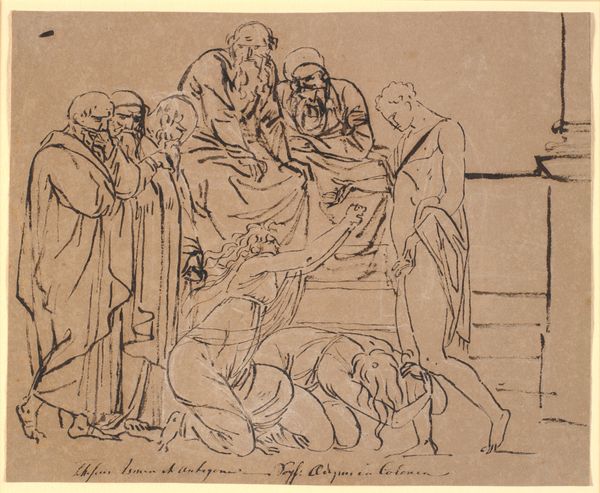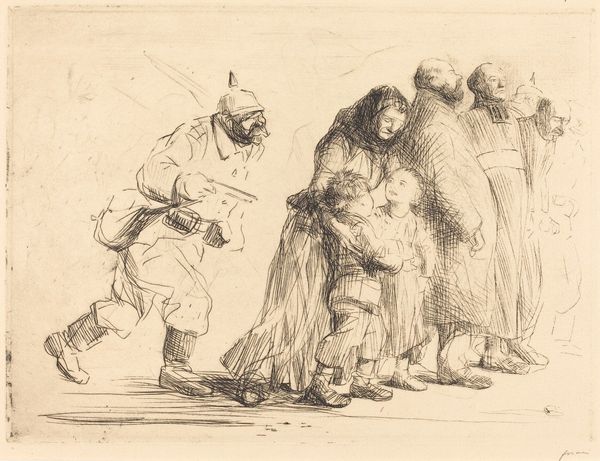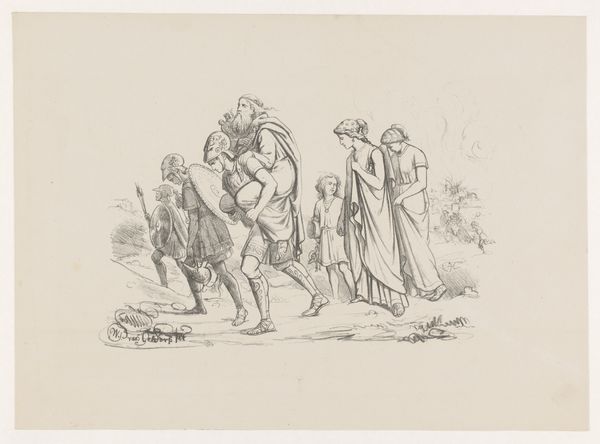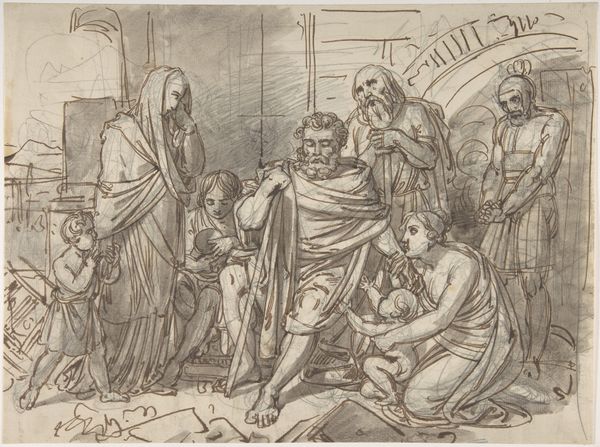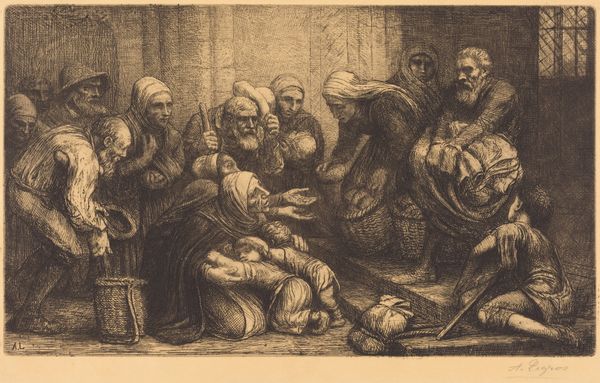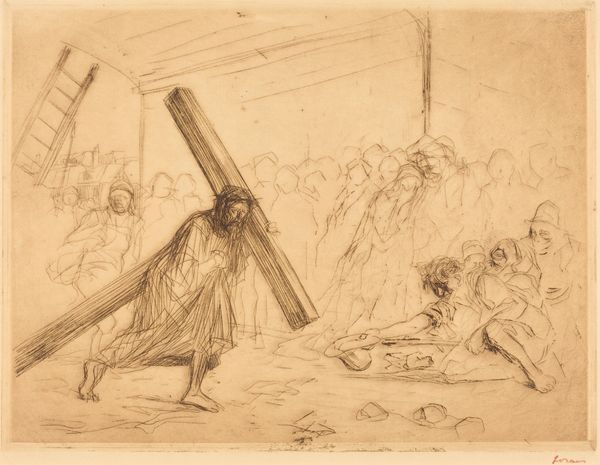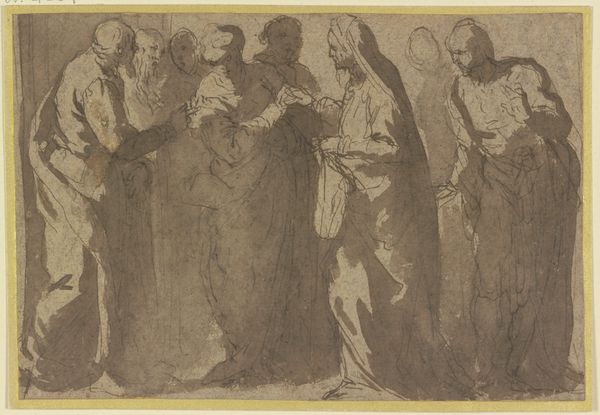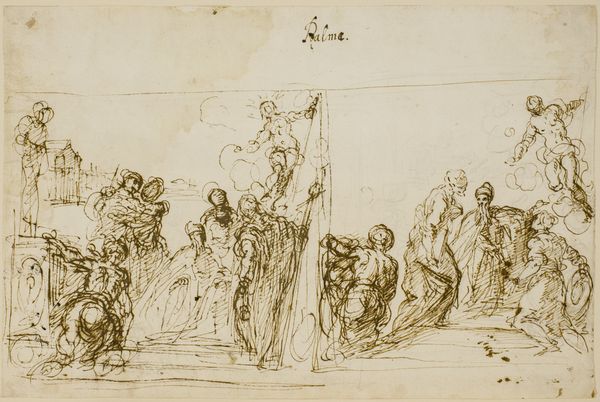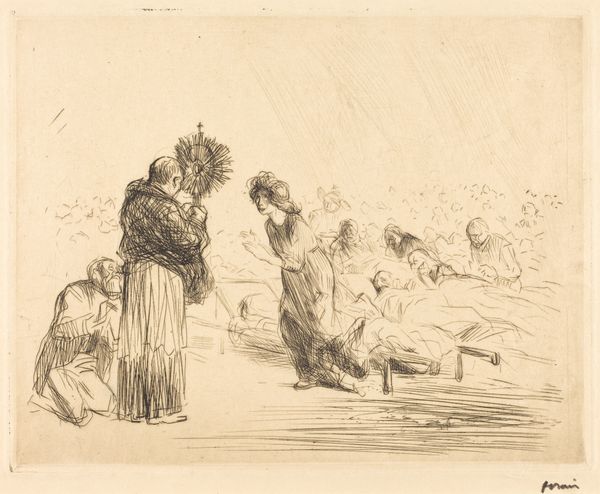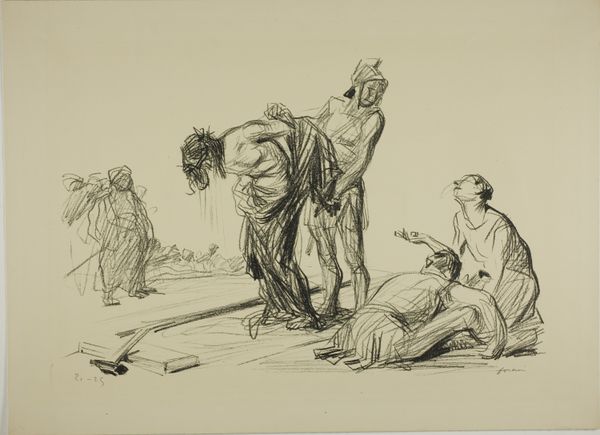
Copyright: National Gallery of Art: CC0 1.0
Editor: So, this is Jean-Louis Forain's 1915 etching, "The Notables (small plate)." The image immediately feels heavy, burdened by what seems to be a tragic procession. The lines are frantic, the scene is stark. What do you read into this, beyond the surface? Curator: Well, that frantic energy is palpable, isn’t it? It feels like a sketch ripped straight from a nightmare. But Forain isn't just depicting; he's accusing, you know? It’s 1915 – World War I is raging, and this isn’t some grand, heroic scene. This is the bitter, brutal cost of conflict etched in every line. The figures huddle together, their faces worn. I sense loss and desperation. What kind of questions did the picture bring to mind? Editor: I was struck by how the soldiers in the background seem almost ghostlike, while the civilians are so solid, so present in their grief. It’s a stark contrast, almost as if the war itself is an abstraction to those perpetrating it. Curator: Precisely! They're the *absent* presence, aren't they? Forain cleverly subverts the typical war imagery by focusing on its victims rather than its supposed heroes. What do you make of the children in the foreground? Editor: They seem terrified, clinging to their mother. Their gaze, tilted upwards, really tears at you. Curator: It’s unbearable, isn’t it? Forain forces us to confront the human cost. He gives faces to those nameless statistics we often gloss over in history books. It makes you wonder about the narratives we choose to tell ourselves, doesn't it? Editor: Definitely. I came in thinking about technique and composition, but I’m leaving with a pit in my stomach, thinking about empathy and responsibility. Curator: Isn't that the power of art, though? To nudge us, ever so slightly, out of our comfortable little boxes?
Comments
No comments
Be the first to comment and join the conversation on the ultimate creative platform.



